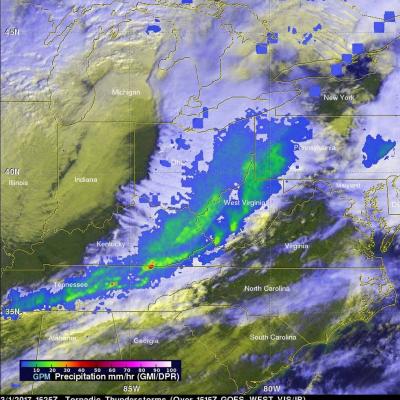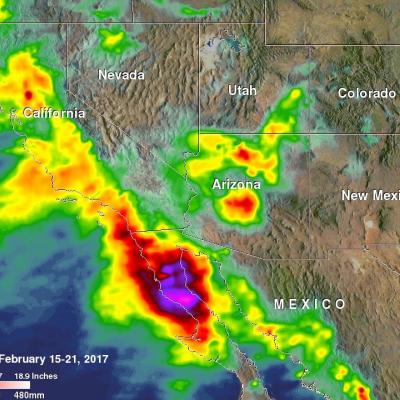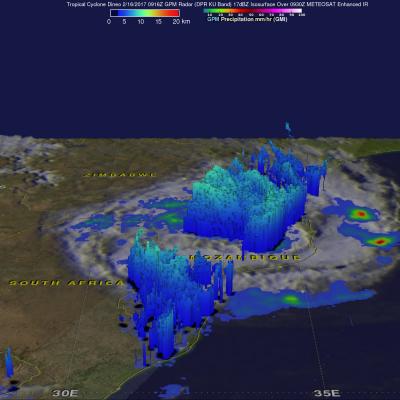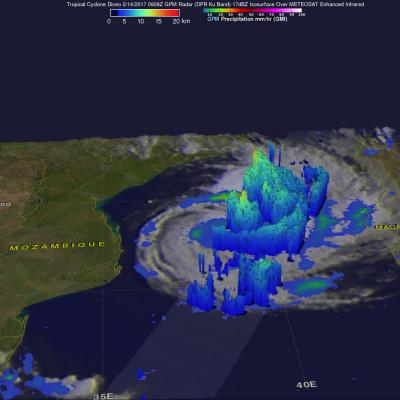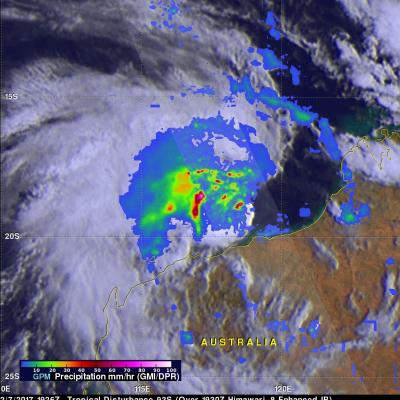NASA Examines Deadly Spring-Like Weather With GPM Satellite
Rainfall from spring-like downpours in the U.S. from February 25 to March 1 were analyzed at NASA using data from the Global Precipitation Measurement mission or GPM satellite. This GPM rainfall image combined with infrared cloud data from NOAA's GOES-West satellite shows the line of storms that stretched from Pennsylvania to Alabama on March 1, 2017. Red areas indicate rainfall up to 50 mm per hour. Record breaking warm temperatures this winter have caused plants to bloom early in the eastern United States. Unfortunately this has also resulted in the formation of spring-like severe


